Sauerkraut is one of the best sources of live probiotics out there. Just 2-3 tablespoons of sauerkraut will give you enough beneficial colony-forming units (CFUs) recommended for a day.
Unfortunately, many sauerkraut brands you find in stores or online often do not contain enough or any probiotics at all.
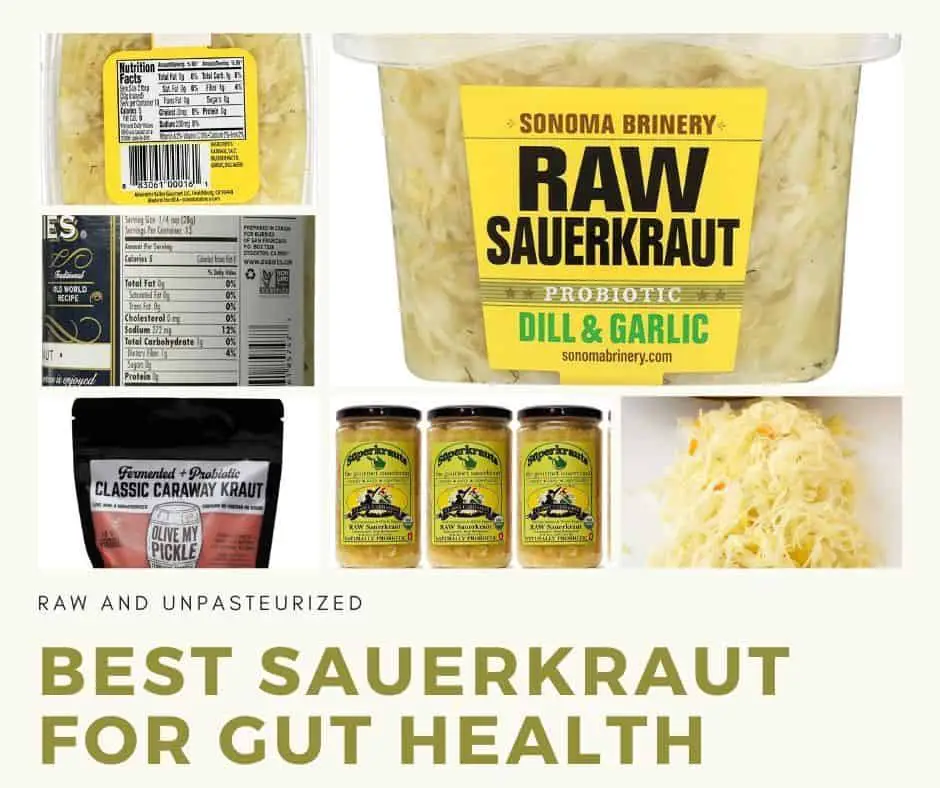
The amount and quality of bacteria that are present in sauerkraut depends on many factors, like fermentation time, jarring/canning process, fermentation method, and the amount of salt used.
One of the most significant things to look out for is if the sauerkraut has NOT been pasteurized. Pasteurization is a heat-treatment process that kills most of the bacteria, whether these are good or bad. You always want sauerkraut that is unpasteurized.
So, if you are not sure which sauerkraut is the best to buy, don’t worry. Below I have listed 5 sauerkraut brands that are raw, naturally fermented, unpasteurized, and loaded with gut-friendly bacteria.
Best Brands of Sauerkraut That Do Contain Live Probiotics
1. Old Fashioned All-Natural Probiotic Packaged In Raw Format
2. Olive My Pickle Classic Fermented Probiotic Sauerkraut
3. Bubbies All Natural, Classic Sauerkraut With Live Cultures
4. Hamptons Lacto-Fermented Sauercraut With Probiotics
5. Wise Goat Organic Sauerkraut With High Probiotic Content
Does All Sauerkraut Have Probiotics?
Quite often, commercially pickled items like sauerkraut or pickles that you can get in big supermarkets are made with vinegar. It is important to note that sauerkraut made with vinegar and/or is pasteurized does not contain live probiotics.
Also, artificial coloring and preservatives are often added to the products that can further minimize the level of live bacteria that are actually found in sauerkraut.
FERMENTED AND PICKLED ARE TWO DIFFERENT THINGS: … Unlike fermenting, pickling merely means exposing foods to vinegar or brine, which doesn’t facilitate fermenting as such.
How To Buy The Best Sauerkraut?
When buying sauerkraut, there are a few things you need to look out for. Always check the product label and look for the following.
Your sauerkraut should be:
- Lacto-fermented or naturally fermented
- All-natural
- Raw
- Unpasteurized
- Free of vinegar
The labels will tell you if it is naturally fermented. Once opened, if the jar bubbles up, it’s a sign that living organisms are present and brimming with probiotic power for you.
At this point, I should mention that pickled and pasteurized foods are not bad for you. Pickled sauerkraut or pickles can taste absolutely great, but they just come without the benefits of live cultures.
Also, if you are planning to cook/heat your sauerkraut, then the probiotic content of the product does not matter as the heat will kill the bacteria anyway.
Probiotics can be found naturally in fermented foods such as yogurt, kefir, cottage cheese, and sauerkraut, and our ancestors were consuming fermented foods as far back as 10,000 years ago.
How Are Fermented Foods Made?
The practice of fermenting foods has been around for ages. Back in the days before refrigeration and modern food storage, people of days gone by had to find ways to preserve food. Their processes of fermentation created beneficial amino acids and vitamins, making them a rich source of probiotics.
Fermentation is a process that occurs when bacteria or yeast turn the sugars found naturally in foods into other compounds such as organic acids or alcohol, all without the use of oxygen while creating energy for themselves.
It’s how beer and wine are made (those microbes convert sugar to alcohol), though the microbes that make lactic acid are responsible for our tangy fermented food favorites like sauerkraut, kimchi, and yogurt for example.
Fermented foods are rich in nutrients. Consuming these probiotic foods, you are adding beneficial enzymes and bacteria and to your overall intestinal flora, increasing the health of your digestive system and the gut microbiome. Eating fermented foods is shown to have many other benefits for your body.

Other Fermented Probiotic Foods You Should Eat
As more becomes known about how our gut health affects our overall health and functioning as a second brain in our bodies, this natural and healthy food preservation method is not only a popular choice for plant-based and flexitarian diets but for anyone trying to eat more healthily.
These 10 popular probiotic foods below offer numerous health benefits that range from better digestion, gut, and heart health to improved mood and beyond.
From kefir to sauerkraut, tempeh to kombucha, the world of fermented food is varied and rich. So give your digestive system a good old burst of healthy microbes with these delicious probiotic foods below.
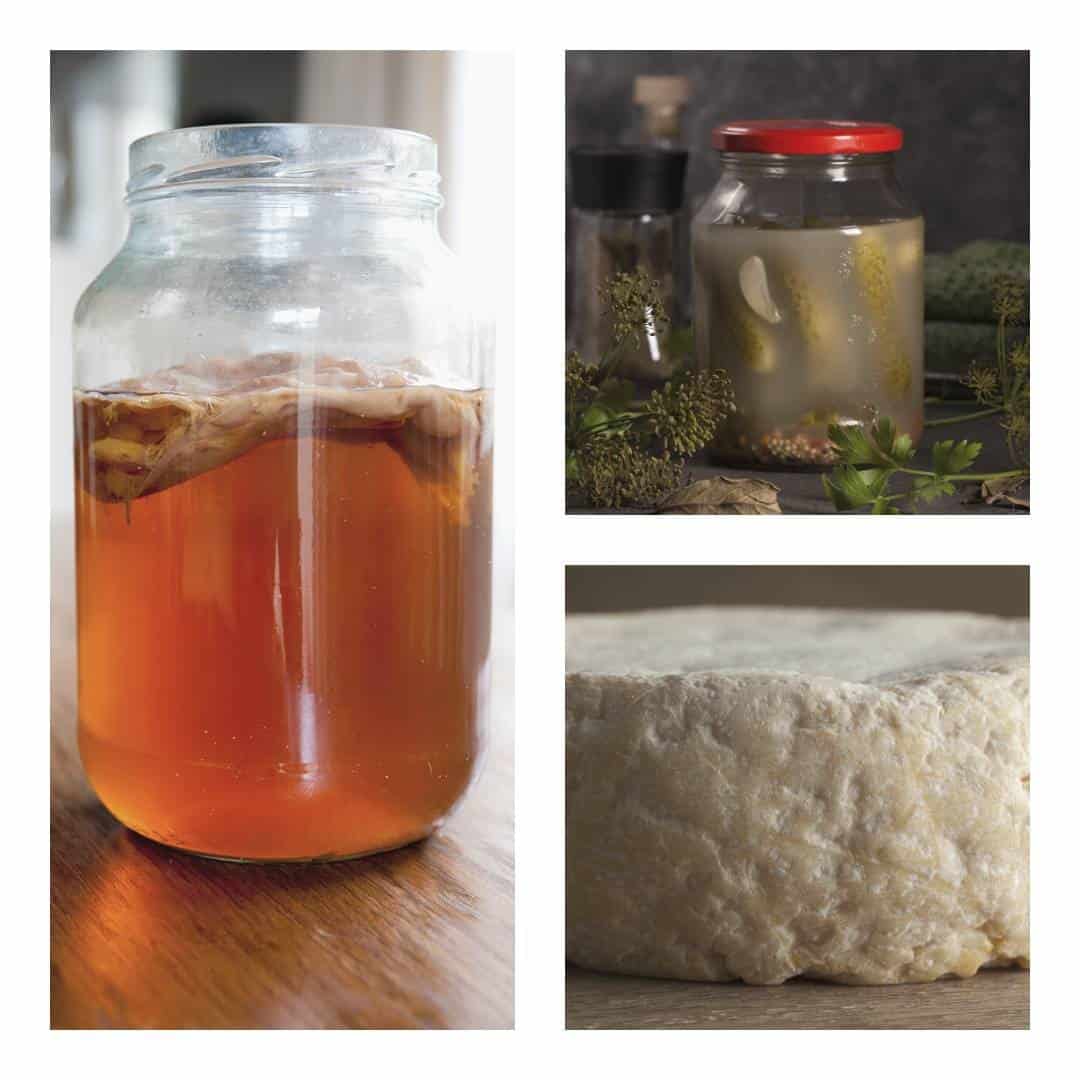
Beet Kvass

Beet kvass has seen a lot of attention in the health circle lately and for good reasons. For one thing, it has tons of nutrition, even in a 6-oz serving. Its primary health benefits are touted as being helpful for gut health, but beet kvass helps your brain, heart, and liver as well.
Some people use it to enhance their athletic performance. The nitrates and betalains within beets encourage blood flow to the muscles – which may result in better endurance and lowering resting blood pressure.
Beet Kvass is hugely popular in Ukraine and Russia. And tales are told that no Ukrainian home is without a bottle of kvass at all times.
History put its consumption as early as the 10th century and is enjoyed by Russian society from all walks of life. Some would even say that drinking kvass is safer than drinking water. That is how much they believe in its health benefits!
Kvass can be made in a couple of ways. One version of kvass is made from sourdough rye bread, which is how it’s typically made. But you can also use various fruits like lemons and apples. Beet kvass, on the other hand, is made by culturing beets in brine.
The process is similar to preserving kimchi or dill pickles, as the fermentation process can take a couple of days to several weeks. To make beet kvass, all you need is beets, water, and salt. Whey can also be used to speed up the time to make beet kvass, but that is entirely optional.
Because of the fermentation process, beet kvass has less sugar and more of the probiotic content of Lactobacillus – which is known to be beneficial for gut health and helps with digestive issues.
Kimchi

The most common form of kimchi is made with cabbage, though in Korea, many other vegetables can be used too, from cucumbers to radishes. Full of fiber and vitamins K and B2, it has many different probiotic strains. You can easily make it yourself, but if you’d rather skip the work, look for ones that are free from added sugar.
Adding fermented foods to your meals once or twice a day can help fortify the gut. Easy ways to incorporate #fermented foods into your nutrition include mixing them into salads, enjoying them as snacks, or even adding small amounts to your smoothies.
Pickles

As mentioned before, pickles, like sauerkraut, can be tricky because much of what you see in the supermarket are pickled with vinegar. When you use vinegar in fermented foods, it destroys a lot of the good bacteria.
While these pickled foods may offer a little bit of probiotic benefit, I strongly recommend eating traditionally fermented pickles to increase the variety of good bacteria in your digestive system and the gut microbiome.
Look for brands that use brine made of salt and water. Labels are always very telling when shopping for probiotic foods. Choose the kinds of pickles with probiotics, and you’ll always have a deliciously healthy snack that really benefits your health.
Naturally Fermented Pickles With Probiotics
These naturally fermented pickles from Amazon here are really the best choice when it comes to probiotic-rich pickles. I also like the fact that they actually cool-ship the pickles with the ice pack.
Kefir

Kefir has suddenly gained loads of popularity due to its probiotic powers.
Kefir tastes like yogurt or soured milk but isn’t as thick, which is why it’s been a prime choice for smoothie lovers. It blends right in seamlessly. If you love to start your day with a morning smoothie, get kefir, and make your morning powered by probiotics.
You can buy ready-to-drink kefir in some shops, or you can make your own kefir at home with these Water Kefir Grains here>>>
Yogurt

Yogurt has been one of the most popular probiotic foods for years. It’s a healthy choice for breakfast too, as long as there are no added sugars. Choose your yogurt brands wisely to make sure you find ones with live active cultures; otherwise, it won’t be aiding your gut health.
Raw-Milk Cheese

Made from unpasteurized milk, raw milk cheeses come in many forms from firm to creamy or even crumbly. These are the ones made by artisans on those small farms with single herds of cows, goats, or sheep.
Not only do these intricately made raw milk cheeses taste better anyway, but they also give you the probiotics you need. Some to try are Maytag blue, Fontina, Roquefort, and Parmigiano-Reggiano. Again, reading labels to ensure they’re raw is a good idea.
Tempeh

This soy-fermented cake is a top choice for vegans and vegetarians. It helps your body absorb more minerals and vitamin B12. With soy-based products though, should be eaten in moderation because too much soy can be a bad thing.
Kombucha

This sweet fermented tea made with yeast and bacteria is a great probiotic choice for when you’re on the go.
Look for brands that produce it in smaller batches as the commercial stuff you’re seeing everywhere on the shelves of supermarkets is loaded with sugar, plus the added carbonation can lead to bloating.
Get this easy and fun kombucha starter kit here that comes with kombucha cultures and start making your own delicious, healthy, and natural kombucha at home that will keep your gut happy and save you so much money.
Read more about why Kombucha Tea and Apple Cider Vinegar are such a hot topic this year.
Miso
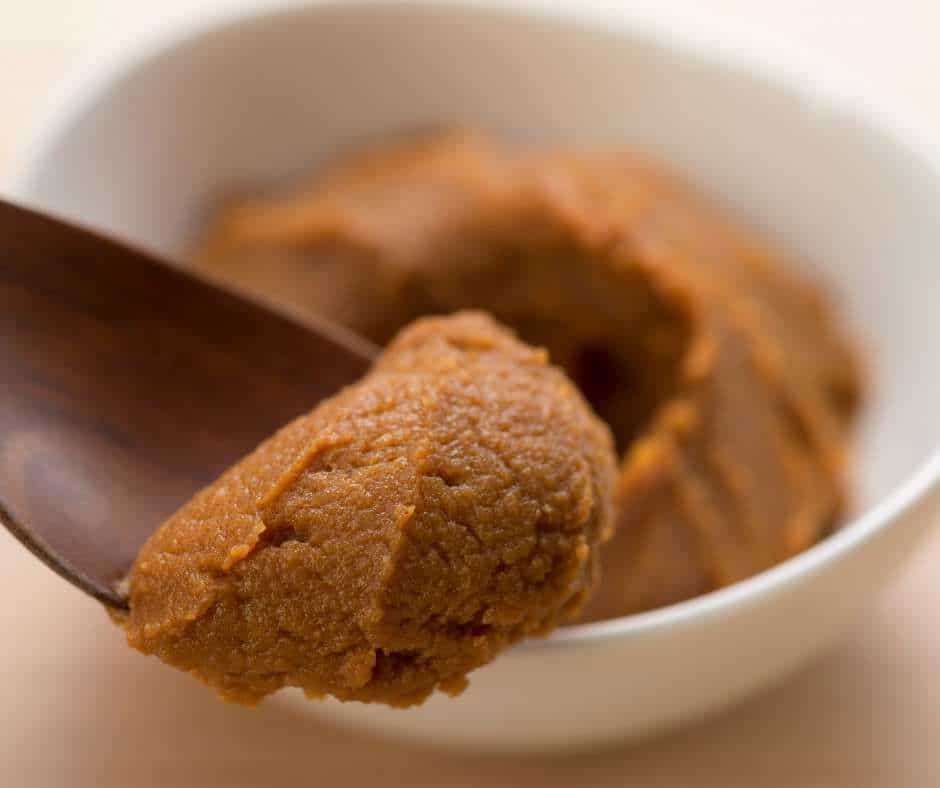
Miso is a popular food in Japanese restaurants. Usually eaten as soup in addition to other Japanese dishes, miso literally translates to fermented beans from Japanese. The fermentation process involves using kōji.
Also known as Aspergillus oryzae, which is a type of fungus gastronomically held in high regard in Japan. It’s the key component in making miso and other Japanese seasonings like sake, rice vinegar, and soy sauce.
To make miso, rice, barley, or soybeans are used. Although soybeans will always be the main ingredient even if barley or rice is added. Soybeans are the primary basis for the fermentation process to take place, while the other parts are used to change the flavor.
Because of the different ingredients that go into miso and the varying times of fermentation, there are mostly three categories of miso. There is white, red, and a third one that is a mixture of both. Miso is widely available in paste form, and preparing miso soup is easy. All you need to do is heat water with miso paste over low-medium heat, and it’s ready to serve!
Since producing miso involves fermentation, beneficial probiotics are created, and the principal strain found in miso is Aspergillus oryzae.
These microorganisms are activated in soybeans during the fermentation process, which promotes digestive health when consumed as miso.
It’s important to prepare miso carefully – avoid the mistake of using boiling water, for example, as it will not just reduce the health benefits, but kill the probiotics as well.
Soured Milk
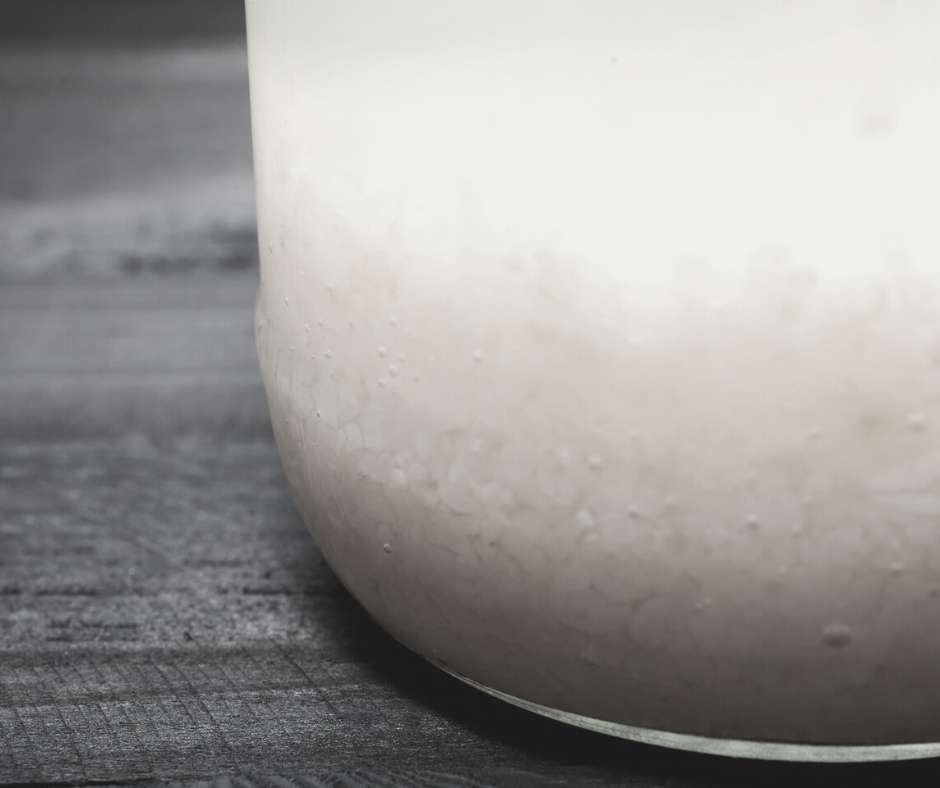
Soured milk is essentially the fermentation of milk by bacteria. Either intentionally or by accidentally leaving it unconsumed for a prolonged period. The growth of bacteria changes the texture, smell, and flavor of the milk.
Unlike the other items in this list, the origins of soured milk probably go back to when our ancestors first domesticated animals. It was the first dairy product for humankind back in those days when earthenware was used to ferment milk.
What originally started as an accident rapidly progressed into deliberate attempts to ferment milk faster. This was done by adding fermented milk into fresh milk. Modern methods have broken down this process into introducing specific bacteria like Lactobacilli or Bifidobacteria into milk.
Nowadays, sour milk is sought after in many countries, from a thick curd form to drinking as it is in some Scandinavian regions. The rate at which milk turns sour depends on a few factors, which include the number of lactic acid-forming bacteria present, the temperature at which the liquid has been stored, and light exposure.
Sour milk is usually produced from unpasteurized milk, which is allowed to ferment naturally. This results in the making of beneficial probiotics. Sour milk or fermented milk products are widely available around the world, and preferable for lactose-intolerant individuals.
Fermented foods provide your body with live bacteria. These little workers help maintain appropriate pH in the digestive system, supporting the release of correct enzymes & making it much easier for the body to extract, process and absorb the nutrients.
When eating fermented foods to get the benefits of probiotics, it’s important to remember that you have to make this a daily habit. You can’t just eat yogurt here and there or take one bite of sauerkraut a week.
Each day, you must eat something fermented to get that beneficial bacteria working for you in your gut, as well as match it with prebiotic foods to maximize your health potential.
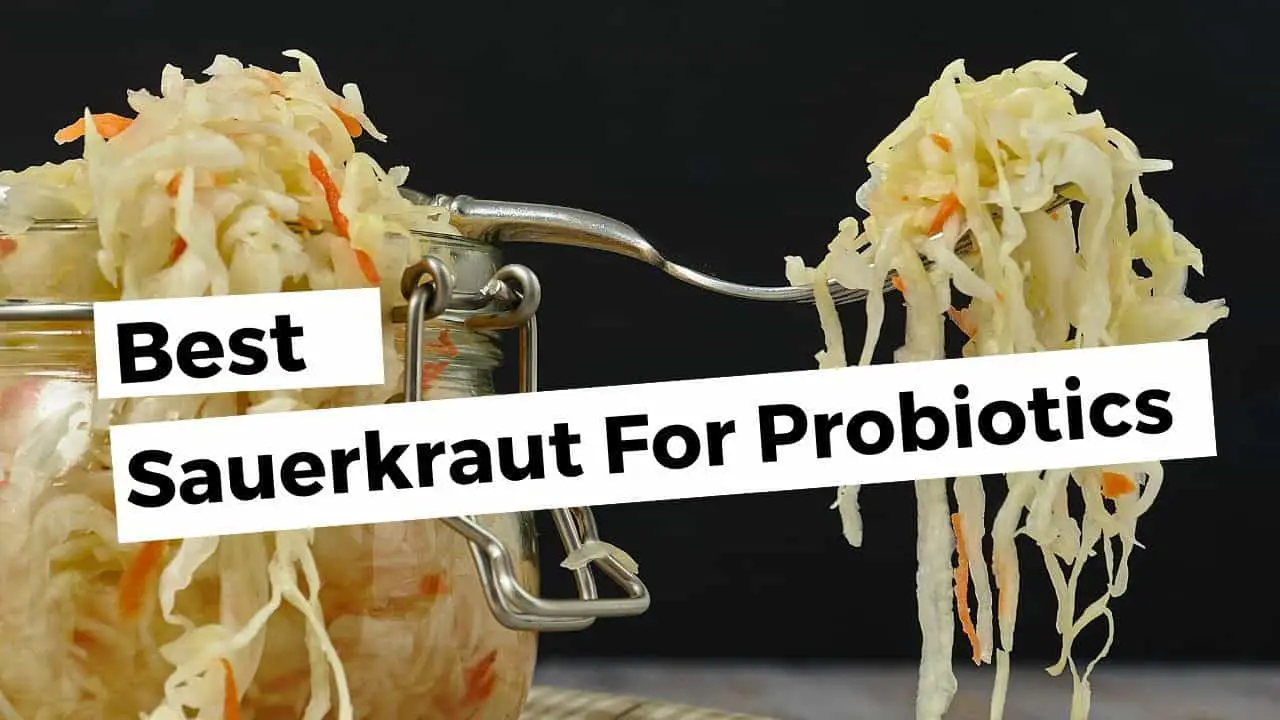




![Raw Organic Fermented Probiotic Sauerkraut, Classic" Variety [Vegan, Gluten Free, Non-GMO, Probiotic] 16oz Glass Jar by Wise Goat Organics Raw Organic Fermented Probiotic Sauerkraut, Classic" Variety [Vegan, Gluten Free, Non-GMO, Probiotic] 16oz Glass Jar by Wise Goat Organics](https://m.media-amazon.com/images/I/51Tbldm-KnL._SL500_.jpg)


Well at least I like two things listed here! Haha I am not a big fan of fermented foods but I do like yogurt and pickles. I guess I will have to eat more of those two items to make sure I get enough of the benefits. I do like cheese but real “natural” cheese is hard to come by where I am at.
This one is so interesting. I know that I need to eat more fermented foods for gut health, but I just find so many of them icky. After some brief dalliances with kombucha, kimchi and sauerkraut (icky!) I was beginning to despair I wouldn’t find a fermented food I liked that wasn’t pickles. I think I’m gonna try kefir, next. Hmmmm.
Did you know you can make your own kefir? It’s basically just adding kefir grains – which you can get on Amazon – to whole milk, and letting it ferment for a few days. I can’t stand foods like sauerkraut or kimchi, but kefir just tastes like drinking yogurt, and if you make it yourself you can control how much sugar and what flavors you get!
Fellow kefir evangelist here! Savory fermented foods and I just don’t get along whatsoever, and even kombucha is hard for me to swallow (pun entirely intended, haha!). But sweet fermented foods like kefir are where it’s at, haha. I second trying to make it – I like to sweeten mine with natural sugar substitutes like pure organic stevia, so I’m not getting as much sugar.
Unsweetened strawberry kefir is great alone – or you can put it in a smoothie and it’s amazing.